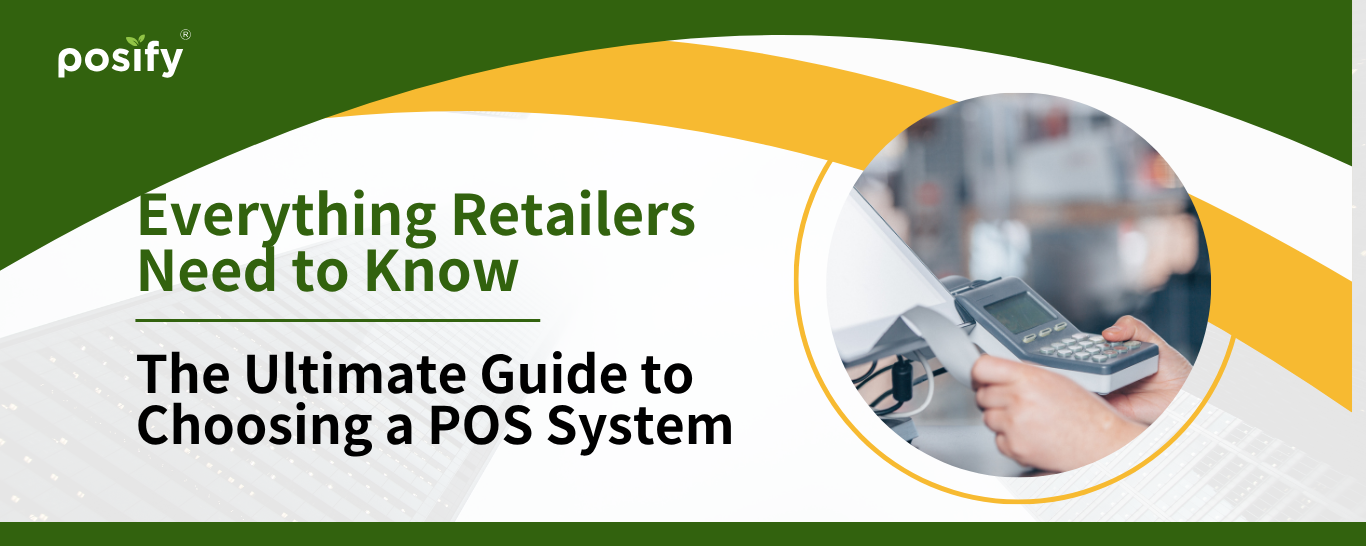Everything Retailers Need to Know: The Ultimate Guide to Choosing a POS System

Driven by Geopolitical Shifts, Global Consumer Trends Are Rapidly Changing – Hong Kong’s Retail Industry Faces Unprecedented Transformation
From large retail chains to small local shops, every business must now leverage technological tools to improve operational efficiency and customer service quality. Among all the tools available, the POS system is no longer just a checkout machine — it has become the cornerstone of digital retail operations.
This article provides a comprehensive breakdown for Hong Kong retailers on modern POS system functions, key considerations when choosing one, real-world application scenarios, essential preparation before implementation, and future industry trends — helping you make efficient and forward-looking business decisions.
What Is a POS System, and Why Should Retailers Prioritize It?
A POS system (Point of Sale system) is an integrated information system that combines checkout, inventory management, sales analysis, staff management, and customer data. Today’s POS systems are far more than just “cash registers” — they serve as the central nervous system of retail operations.
Key features of a retail POS system include:
-
Real-time transaction processing and payment
-
Instant inventory data synchronization
-
Product barcode scanning and price management
-
Automatic generation of sales reports
-
Multi-store or branch management capabilities
-
Staff permissions and shift scheduling
-
Customer database and loyalty program integration
For Hong Kong retailers, choosing the right POS system can not only reduce labor costs but also enhance customer service and overall operational efficiency.
How to Choose the Right POS System? Five Key Factors You Can’t Ignore
With numerous POS options in the market, making a smart decision requires careful evaluation based on your business needs, operational processes, and long-term development goals. Here are five essential considerations:
1. Comprehensive Features and Modular Capabilities
Different retail sectors have different needs — for example, fashion retailers may prioritize size and color management, while convenience stores require fast checkout and barcode auto-identification. Before choosing, evaluate whether the system’s functions can be flexibly expanded as your business grows.
2. Language Support and Interface Relevance to the Hong Kong Market
Hong Kong is a bilingual and multicultural society, where front-line staff, back-office personnel, and customers speak different languages. A POS interface that supports both Traditional Chinese and English is crucial to boosting efficiency and reducing errors.
Systems offering Chinese-language reports, user guides, and localized tech support are better suited to Hong Kong's actual operational needs. Some vendors even provide custom features tailored to local regulations and tax requirements — small details that can greatly improve workflow.
3. Cloud POS vs. Traditional POS
When choosing a POS system, deployment method is the first thing to consider. There are two main types:
-
Cloud POS System: Data is stored on cloud servers, enabling cross-location access, remote management, and real-time backups. Ideal for businesses with multiple locations or on-the-go managers, cloud POS offers flexibility, visibility, and lower hardware maintenance costs.
-
Traditional POS System: Installed locally on a computer or server, with high stability and not affected by internet fluctuations. For stores in areas with poor network connectivity or conservative environments (e.g., warehouses, wet markets), traditional POS is still a reliable option.
In summary: Cloud POS is ideal for businesses needing mobility and centralized control, while traditional POS suits retailers that demand system stability.
4. Reporting and Data Integration Capabilities
Data is power. A robust POS system offering comprehensive reports can help you monitor daily operations and uncover hidden opportunities. For example:
-
Real-time Sales Reports: Track hourly sales and performance differences across branches.
-
Product Analytics: Identify best-selling items and slow-moving inventory.
-
Customer Behavior Reports: Monitor member repurchase rates and average spend.
-
Operational Trends: Generate monthly/quarterly comparisons to forecast demand and plan restocking.
Systems that integrate with accounting tools, inventory platforms, and eCommerce channels can significantly reduce manual input and enhance operational efficiency.
5. After-Sales Support and System Updates
Retail operates at a fast pace — a POS system failure can bring your entire store to a halt. That’s why real-time vendor support is crucial. A reliable POS vendor should offer:
-
Local tech support teams for on-site or remote troubleshooting
-
Multi-channel customer service (phone, email, chat) for faster issue resolution
-
Regular system updates and security patches to maintain performance and security
-
Training and user manuals to help new staff onboard quickly
Choosing a reputable, experienced vendor with ongoing support is more than an investment — it’s essential for long-term operational stability.
Posify is offering a special switch-over promotion: Buy 2 years, get 2 years free, plus an extra 25% off.
Chat with our expert team via WhatsApp today to learn more!
Real-World Applications of POS Systems in Hong Kong’s Retail Sector
Different types of retailers have different POS needs. Below are several typical application scenarios:
1. Fashion and Footwear Stores
Handle large SKU volumes (colors/sizes), manage exchanges, and run loyalty point systems. A POS system can streamline operations and track popular products.
2. Beauty and Skincare Stores
Emphasize customer databases and purchase history to personalize promotions and send targeted coupons.
3. Grocery Stores and Supermarkets
Require fast checkout, barcode scanning, multiple payment method integration, real-time inventory sync, and expiry date tracking.
4. Retail Chains
Use centralized back-office systems to control multiple branches, unify pricing, promotions, and generate consolidated sales reports.
5. O2O (Online-to-Offline) Stores
Cloud-based POS integrates online and physical stores — syncing inventory, orders, and customer data to create an omnichannel experience.
.png)
Preparation and Considerations Before Using a Cloud POS System
Successfully adopting a cloud POS system isn’t just about buying hardware and installing software — it’s a complete digital transformation. Here’s how to prepare:
1. Define a Clear List of Requirements
List the features you need based on your business model — e.g., multi-store support, eCommerce integration, mobile payment compatibility, etc.
2. Assess Staff Capabilities and Training Needs
Even the most advanced system requires capable staff. Vendor-provided training programs are a key selection factor.
3. Plan for Data Migration and Backup
Ensuring smooth transfer of existing product and customer data to the new system is critical for successful transition.
4. Budgeting and Long-Term ROI
Beyond setup costs, consider monthly fees, upgrade costs, support fees, and future scalability for sustainable investment.
Conclusion
In Hong Kong’s fast-paced and competitive retail environment, choosing a feature-rich, stable POS system doesn’t just streamline daily operations — it positions your business for future growth. Whether you run a single outlet or a multi-store chain, the right POS solution is your first step toward smart retailing.
If you’re considering upgrading your retail POS system, start by assessing your needs and evaluating every feature and support option — lay a solid foundation for your business's long-term success.






